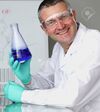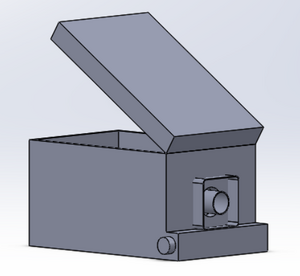BME100 f2018:Group14 T1030 L6
| Home People Lab Write-Up 1 | Lab Write-Up 2 | Lab Write-Up 3 Lab Write-Up 4 | Lab Write-Up 5 | Lab Write-Up 6 Course Logistics For Instructors Photos Wiki Editing Help | |||||||
OUR COMPANY
Our Brand Name LAB 6 WRITE-UPBayesian StatisticsOverview of the Original Diagnosis System
,
Calculation 1 and calculation 2 were both close to 100%. For calculation 1, this implies that the test is very reliable in detecting and displaying the SNP, and is very likely to detect the SNP again if the test is ran multiple times. For calculation 2, this implies that the test is very reliable in concluding that the SNP was not present, and the test is very likely to return these same results if the test is ran multiple times. Calculation 3 was close to 50% and calculation 4 was close to 100%. For calculation 3, this means that about half of the time, the test was effective in predicting that a patient was diagnosed with Parkinson's disease, and would be somewhat reliable to return these same results if ran multiple times. For calculation 4, this means that the test was very effective in not returning false positives, predicting that a patient had not been diagnosed with Parkinson's disease, and would be very reliable to return these same results if ran multiple times.
Intro to Computer-Aided Design3D Modeling Our Design
Feature 1: ConsumablesWe were able to identify a major strength as well as a major weakness with the consumables used in this experiment. One strength of the consumables is that they are quite low in cost for the most part, relative to the other components of the experiment. Also, the consumables are very simple and easy to use. This combination is one that would be very difficult to keep if we make a major change. A major weakness of the consumables is that they are very susceptible to human error, which in turn can lead to inaccuracy or even contamination. Therefore, because of the benefits aforementioned, we will not be altering any consumables in our new design. Feature 2: Hardware - PCR Machine & FluorimeterOne major flaw when it comes to the PCR machine is that it took a long period of time to finish. It was long enough that we could not complete the experiment in the time allotted. Overall, it took about two hours to complete. Although this is a rather annoying and time-consuming issue, it cannot be understated how important it is that it performs its job reliably. If the PCR machine does not do this correctly, it will ruin the entire experiment. For that reason, we will not be altering this aspect of the experiment in any way for fear of messing up the entire experiment. The fluorimetry process is the part of the experiment that we deemed to be the most flawed. It is quite inefficient in a number of different aspects. Most notably, the reset time between trials is far too long because the stand for the phone is unstable most of the time, thus, requiring multiple minutes just to obtain one measurement. Also, only being able to run one trial at a time creates unnecessarily wasted time between trials. However, a great strength of the fluorimeter is that it is relatively low in cost. In order to preserve the low cost of the fluorimetry process and alter the inefficiencies of it, we decided to redesign it. The redesign consists of a track for the fluorimeter to be connected to, and the fluorimeter will be able to move along the track via the use of a knob. This will allow for there to be a lower number of resets. Also, the camera will be fixed into a hole on the box. For a more detailed explanation, refer to the section shown above.
| |||||||





